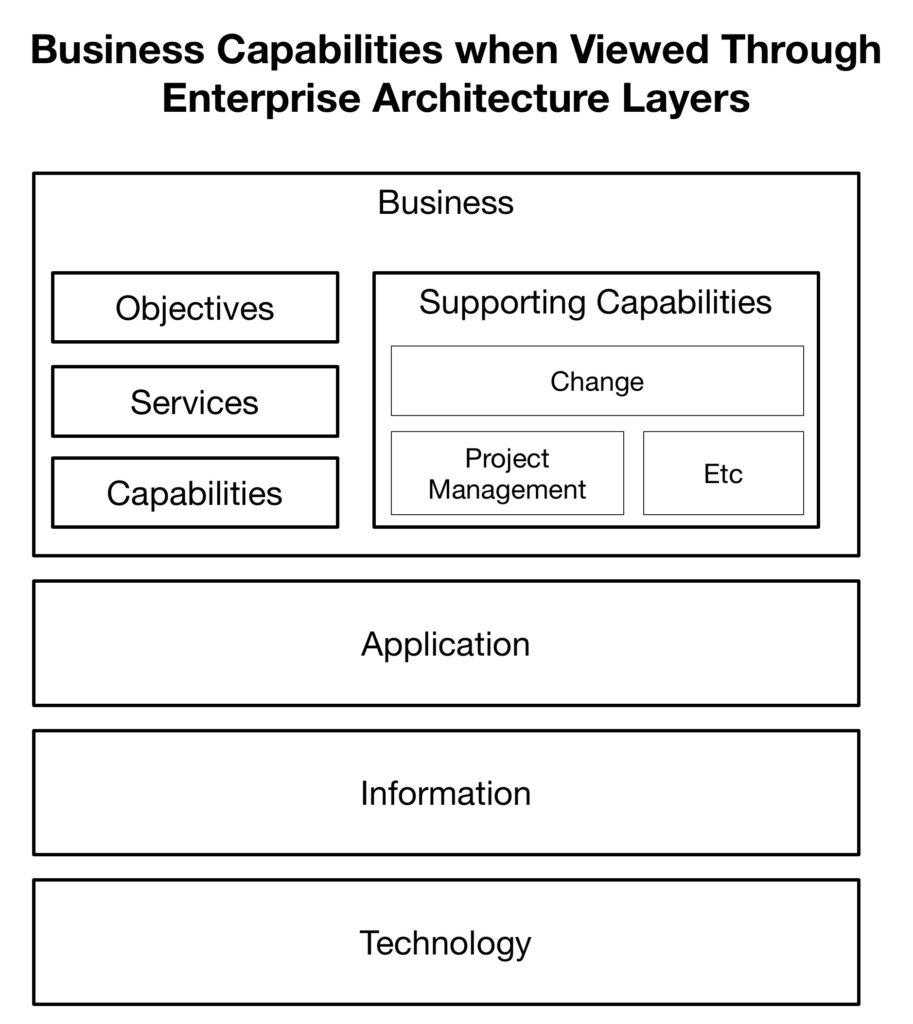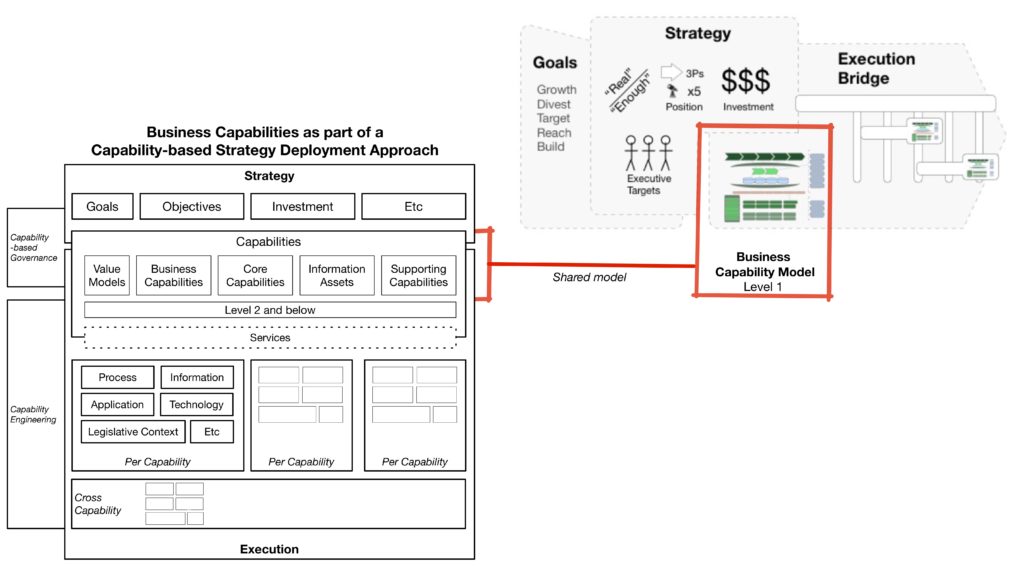This is an extract of MWT Transforms capability-based planning material. Please see ManageWithoutThem.com for additional details.
Typical View of Capabilities
The typical context of “capabilities” within enterprise architecture approaches is shown below. This view places capabilities within the business layer of an overall B.A.I.T. stack.
While the above approach rightly positions capabilities as part of the business view, there are a number of problems with the above approach:
- Insufficient to manage the complexity of “the business” because this is always considered somebody else’s problem
- Expectation that levels of capability should go into details aligned to technology requirements as the layer below is applications under the B.A.I.T. stack
- Incorrectly implies responsibly for “information” is somehow outside of the business layer
- Promotes a capability-based approach as the top layer of an IT function only; rather than across all divisions (this will be denied)
- Supporting capabilities become a jumble of both capabilities that support project delivery as well as non-differentiating business capabilities
Capabilities in a Business Context
The following view places capabilities correctly into the business context as bridging the gap between strategy and execution:
The key features of the above approach are:
- Allows capabilities to be defined in the same language executives use when describing strategy (or operations)
- No need to fully model strategy in order to get value from capability-based approach; however, can be traced to well modelled strategy or changes to strategy, as required
- Allows capabilities to be defined in any situation where the organisation currently has them, or desires them; including scenarios where an existing capability doesn’t support objectives
- Makes service-based management an optional approach; incorporated only when a service- based approach is sponsored
- Allows multiple levels of capability definition, in a hierarchy, while remaining in the business context
- Allows for both capabilities that are proprietary to a business unit and cross business unit capabilities



